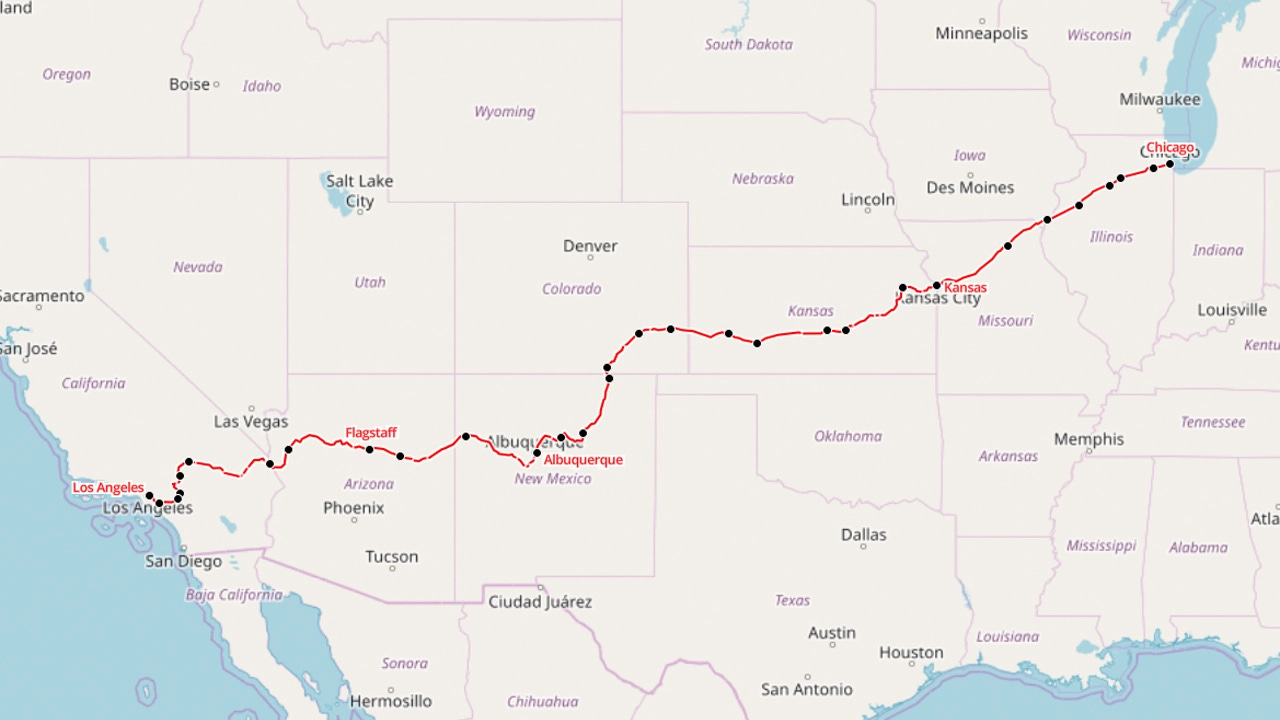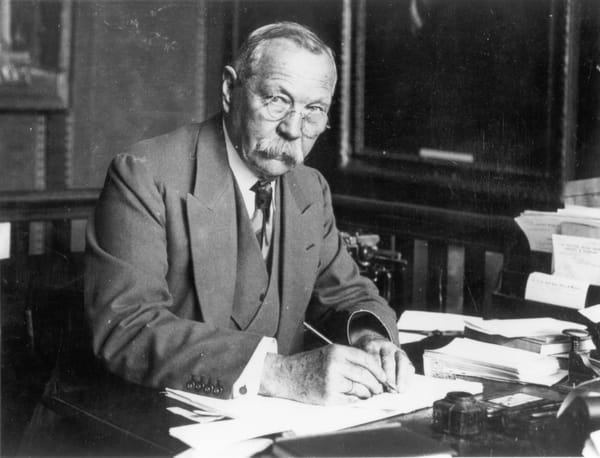Note 32: INFRASTRUCTURE WEEK
Finally! An excuse to talk about passenger rail.
Fraud has become a big theme for me in the past couple of weeks. Not committing it, but detecting it on behalf of my clients.
To recap, I’m responsible for building and maintaining a number of research study software systems on behalf of my university clients. These typically involve either SMS-based mental health interventions or passive digital surveillance (via smartphones) to try and root out the initial contexts that may initiate or exacerbate depressive or anxious episodes.
Due to the last year’s COVID pandemics, many studies that would have face-to-face onboarding processes have moved to entirely online affairs. And since onboarding processes have evolved to meet the needs of the pandemic, researchers have used this as an opportunity for online recruiting to make up for the lack of potential subjects to be recruited in-person. This has created a new avenue for Internet scammers to pretend that they are eligible research subjects to score some sweet Amazon gift cards as compensation.
I’m not going to write too much about what I’m seeing and how I’m dealing with it - I don’t want to tip off any potential fraudsters - but dealing with this has become an unwelcome interruption in my life. It’s an interesting problem to grapple with, but I only wish it were on my schedule and not the scammers’. Fortunately, it’s also an opportunity for me to supplement my existing offerings by offering fraud detection services to research institutions once I get through this initial phase, and have some time to extract what I’ve learned into actual software infrastructure.
Speaking of fraud (real or otherwise), I wanted comment on my lack of comments on the big fraud topic of the moment: the Georgia election bill. Given my large Note two weeks ago on H.R.1, you’d think I’d have lots of thoughts on what’s happening in the Peach State. I don’t at the moment, and the biggest reason is that the most useful reporting that I could use to judge the new law is a comparison matrix with other states that illustrates which states have the same provisions as the new Georgia law, and which do not. This might give me some actual examples of specific provisions in action, so that I can weigh in with how the provisions play out in the real world instead of extrapolating from thought experiments.
The main provision that’s caught my attention is the one that allows the state legislature to replace local election personnel in cases of “under-performance”. My own reading of the law revealed some procedural hoops that have to be cleared (Section 7a) before the legislature can replace local officials: a petition for a performance review, the review itself, and then a subsequent investigation, then a vote by the State Election Board. It sounds like a lot to me, and a process that should limit its abuse, but this is why I would like to see if other states have similar provisions, and to determine if the process serves as a sufficient deterrent for replacing local officials for partisan reasons, or whether it is easily completed, permitting more political meddling from the state level.
That comparison may be the subject for a future Note, but I hope an enterprising journalist beats me to the punch, because with all the partisan mortars flying around this new law at the moment, it’s tricky to get the true lay of the land.
INFRASTRUCTURE WEEK is here!
While the GOP continues to wage its idiotic culture war, Biden’s been much more successful than I would have expected pushing through some big picture legislation (that also includes quite a bit of big spending). While “conservatives” were busy “pwning the libs” with readings of Dr. Seuss and Captain Underpants, Biden successfully pushed through a 1.9 trillion dollar COVID bill with minimal resistance. And after yesterday’s news that the Senate parliamentarian cleared the way for budget reconciliation to be used again for the infrastructure bill, odds are pretty good that we’re going to see a lot more federal taxpayer dollars spent on all kinds of infrastructure and infrastructure-adjacent projects. (And what project isn’t infrastructure-adjacent in one form or other?)
Aside from my usual concerns about federally-initiated actions (adding to the deficit, federalizing what should be a state obligation, meaningful oversight, etc.), I’m mildly excited about this bill. Sure, I won’t like the trillions of dollars added to the federal debt, but as far as spending goes, infrastructure spending scores pretty high on my “what do we have to show for it?” criterion. Treasury dollars go out, and in return we should be getting better transportation infrastructure, cleaner pipes, and stronger bridges. And given that these are projects that the government is the rightful party to be funding (unless you want toll bridges and stuff like that), quibbling over which level should be spending that money is a valid concern, but way down the list of issues to worry about. (As a taxpayer, I’ll be paying for it in some form or other, anyways.)
I’m frankly surprised that it took so long for this to happen. INFRASTRUCTURE WEEK under the Trump administration ended up being a long-running gag, and the neglected younger sibling of The Big Beautiful Wall. The irony is that had Trump done the exact same thing Biden’s doing with this bill, not only would we be suffering by seeing Trump’s name slapped on all the projects (“Thank you for crossing the Trump Brooklyn Bridge!”), but odds are pretty good that Trump could have funded his border wall easier under a large infrastructure bill, instead of breaking it out and focusing on it exclusively as part of the stupid culture war.
So, other than this bill being not-a-Trump bill (Thanks Secretary Pete!), I’m also glad that Biden is the president pushing this for one very somber reason: we both love our trains. Biden is famous for being a daily rider of Amtrak during his legislative career, and a fan of the rails. I’m also a fan of trains, as they’ve been my primary mode of transportation since I moved to the Chicago area, and I also enjoy riding them for longer-haul trips where the routes go and my fellow passengers have the patience to take a bit longer getting there.
For example, when I visit family in northeastern New Mexico, that’s almost certainly going to be a train trip for me. The local Chicago bus stops right outside my door, it takes me to Chicago’s Amtrak Union Station, and I can board the Southwest Chief to head out West. If I’m traveling alone, a coach-class ticket is usually what I’ll purchase, but I’ll sometime splurge for a roomette if I have company (more for them than for me). I get to see lots of decent scenery and usually wake up as the train is crossing the Kansas/Colorado border. Typically, I’ll either meet family in Trinidad or Raton, and catch a ride back to their place with them. From end-to-end, it’s roughly a 24-hour experience, depending on the delays along the way.
When I fly, the nearest airports are about four hours away when driving, plus I have to rent a car to go that distance. (My folks are rarely running errands in Albuquerque, Amarillo, or Denver.) Plus I have to deal with getting to the airport, waiting, flying, and all that entails. It’s a shorter trip (8 to 10 hours or so), but with a lot more stress and effort on my end. In contrast, being on the train is not only more comfortable (the amount of legroom you get compared to a car or plane is mind blowing the first time), but also provides a period of time where it’s not only advisable to go offline, but necessary as the train speeds through areas with no wireless coverage of any kind. I can use the train ride to log some much-needed downtime, catch up on that book I’ve been neglecting, or clear out my backlog of unanswered e-mails. Train time is sanity time for me.

So, given that I’m a fan of the railways, what would I like to see happen with those Infrastructure Bucks? Here’s my list:
- Bridge the Amtrak funding gap so that there’s no longer an open question of whether America will be part of the modern developed world with its own national passenger rail network. Upgrade the existing routes and equipment, and add redundant tracks and additional capacity for the parts of the map that are most likely to be delayed due to sharing freight lines. Upgrade the basic infrastructure to support high-speed rail in the regions that can accommodate speeding bullets.
- Work with states to begin connecting clusters of towns and cities together via rail to both encourage rail use, and to alleviate congestion and the hazards of highway driving. The one state to emulate is New Jersey. When I was in college, the train the best way to get to and from major areas of interest, with cabs and other transportation filling in the last-mile gaps. Similar regional networks could serve places like the central Colorado region (Denver, Colorado Springs, Boulder, Fort Collins) as well as north-central New Mexico (Albuquerque & suburbs, Santa Fe, Las Vegas, the Rio Grande Valley up through Española, Los Alamos, and Taos).
- Interconnect the interstate Amtrak network with the local public transportation systems, so that transitioning from one to the other is as simple as switching train platforms.
- Update and modernize the Amtrak experience. While Amtrak has been doing a decent job updating their cars from a functional perspective (landing a seat with a power outlet used to be a crap shoot), and I have grown to appreciate the the Amtrak “aesthetic”, a revised design can make it feel less like stepping into a time capsule, and more like a first-class modern traveling experience.
- Bootstrap infrastructure for monetizing value-added services on interstate routes. Take advantage of the fact (tastefully) that passengers are a captive market to be served above and beyond the limited concession stand and dining cars that are currently standard on the long-haul routes. Supplement the human in the concession stand with self-service kiosks (that don’t go on lengthy breaks) to sell snacks, electronics, Amtrak swag, magazines, and books about places alongside the rails as a way to both fund operations as well as make life more pleasant for the passengers along for the ride. Sell access to a reliable satellite-backed train area wireless Internet. Rent tablets (with a deposit) preloaded with films and other video programming to riders. Bring back the bar car. When purchasing tickets, let customers choose their meals ahead of time (from an expanded menu) for the dining car. Give me an incentive to spend money on the train during my trip instead of the Walgreens next to the station to keep me fed and watered on my trip. In short, stop thinking of long haul passenger train routes as Greyhound buses on rails, and more like small cruise ships traveling over land. Make train traveling glamorous again, and monetize the hell out of it.
- Collaborate and co-brand with popular sites and destinations. Make it simple, timely, and affordable for me to take a family from Chicago to Disneyworld on the train. Partner with the city of Las Vegas and its mega-casinos for me to buy a ticket that drops me off at the local rail on The Strip. Work with historical organizations and museums to provide relevant value-added experiences when riding toward a historical sites and events. Partner with those destinations to build-out sponsored destination-specific cars and accommodations that get riders ready and excited to visit where they’re going. The one group and destination that really did this well were the Boy Scouts and their troops headed en masse on the Amtrak on their way to the Philmont Scout Ranch in Raton, NM. By the time I arrived in at the same destination, it wasn’t uncommon to have picked up a car full of excited Scouts along the way ready to tackle the mountains south of Cimmaron.
- In addition to an upgraded (and further upgrade-able) experience, reintroduce America to the benefits of train travel through traditional broadcast and print advertising. Tout its ability to take a mini-vacation for a few hours without the headaches of driving. Highlight its environmental benefits over driving and flying. Revisit the rail’s role in the history of building the US in the first place, and invite people to connect with that past. Encourage more film and television companies to feature trains as settings for their dramas and comedies. (Special shout-outs are due to HBO’s Run and TNT’s Snowpiercer.)
- Invest significant basic research and development dollars into making train travel faster, more frequent, and more energy efficient. Dust off the plans for nuclear-powered mega-trains. Investigate the feasibility of solar and battery-powered electric engines. Research opportunities for using the rail infrastructure itself as a potential conduit for high-bandwidth Internet links, and the rail itself as a part of a local network for providing Internet connectivity on the vehicle.
While part of my wish-list for INFRASTRUCTURE WEEK is an improved personal experience on the train, I also think that effective rail transport will not only be necessary to improve humans’ per-capita energy footprint compared to individually-oriented transportation options. I also believe that in its current incarnation, modern American rail travel is leaving quite a bit of value on the table and there’s an opportunity in the upcoming infrastructure push to capture that value in such a way that not only improves the system overall, but introduces additional methods for it to pay for itself (both on-train, and with partners and sponsors), and pushes the technology envelope for an even more improved experience.
I’m rooting for Amtrak in this round of policy-making (and money-spending), and I’m not alone.
Book reports
Black Helicopters by Caitlín R. Kiernan (★★★☆☆): After reading Agents of Dreamland, Kiernan hooked me with her hard-boiled take on Lovecraft’s mythology. This second book - which was the first book actually written - is an ambitious story, but unforunately trips over its own shoelaces by being too clever by a half with its non-linear character-skipping time-jumping chapters. While I think I got the main plot points straight, a little more connective tissue between the chapters would have been greatly appreciated.
The Tindalos Asset by Caitlín R. Kiernan (★★★★☆): While this final book of the Tinfoil Dossier collection sits somewhere between Agents of Dreamland and Black Helicopters in terms of storytelling that’s challenging to follow, I appreciated this entry much more than its predecessor in terms of telling the tale of a broken Agent and the interdimensional Hound that accompanys her in fraught adventures. I would read more in this series, but this is the final volume. (Not that it has to be, given the series’ tenuous relationship with the Arrow of Time.)
From Chorazin to Carcosa. Fiction-Based Esotericism in the Black Pilgrimage of Jack Parsons and Cameron by Manon Hedenborg White (★★★★☆): Confession Time: this is not a full book and merely an article from a journal that happens to have its own Goodreads entry. Given the subject matter, I logged it as if I read it as a book, mainly to see what the site recommends from other readers dipping into the same esoteric subject matter.
This paper describes part of the the occult journey (the Black Pilgrimage) recorded by both Jack Parsons and his second wife, the artist Marjorie Cameron. If those names are not familiar, Parsons was an early 20th century rocket pioneer and a founder of NASA’s Jet Propulsion Laboratory. On his journey through his short life (he died at age 37 in an explosion), Parsons managed to associate himself with all sorts of strange characters, including Aleister Crowley and L. Ron Hubbard.
This particular paper makes the case that Parsons drew upon his enjoyment of penny dreadfuls and pulp fiction magazines to inform a ritual in his own religious journey towards godhood. It argues that the writings of M.R. James (Count Magnus) and Robert Chambers (The King in Yellow) were key elements in his acheiving the higher degrees of Thelema. His second wife Cameron followed his path later, and this inspired her own book Black Pilgrimage. It was an interesting dive into a very niche topic, and has opened up a number of additional topics to investigate that intersect with some of my own science and literature interests.
In terms of my overall goal, I am four books ahead of schedule (30 of 101).
Interesting reads and watches
The Trump Fundraising Scams Continue with the NRCC (The Bulwark)
The U.S. Should Vaccinate the World (The Bulwark)
How Did Frasier Afford His Apartment? (GQ)
Malcolm Cecil, Synthesizer Pioneer, Is Dead at 84 (New York Times)
HoloLens for 120,000 Army personnel: Microsoft inks $21.9 billion deal (Ars Technica)
Dominion Builds Legal Behemoth to Drain Trumpland of Billions (Daily Beast)
Some States Moving on ‘Qualified Immunity’ Reform (The Bulwark)
Event Horizon Telescope captures new view of black hole in polarized light (Ars Technica)
New Alan Turing £50 note design is revealed (BBC)
Sean Bean Talks About Derailing ‘Snowpiercer’ (New York Times)
The Secret Auction That Set Off the Race for AI Supremacy (Wired)
Virgin Galactic unveils new SpaceShip III (The Verge)
Happy Hump Day, CMDRs!



